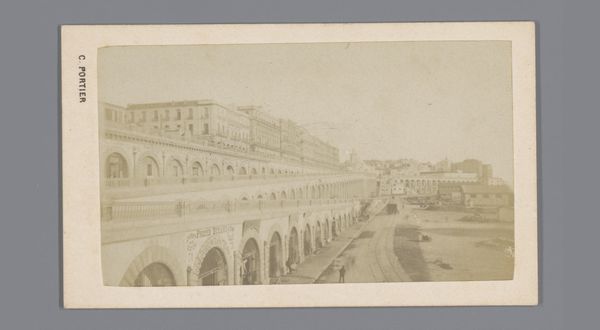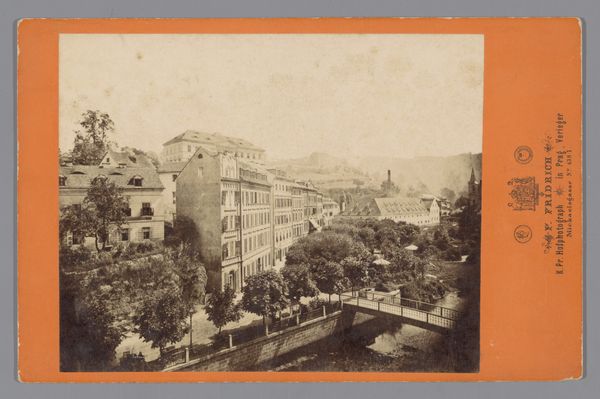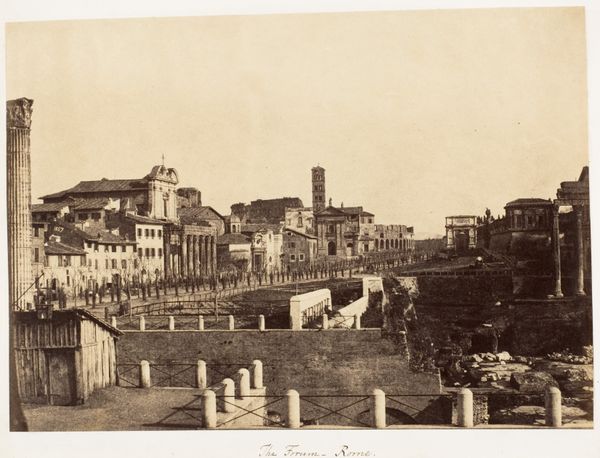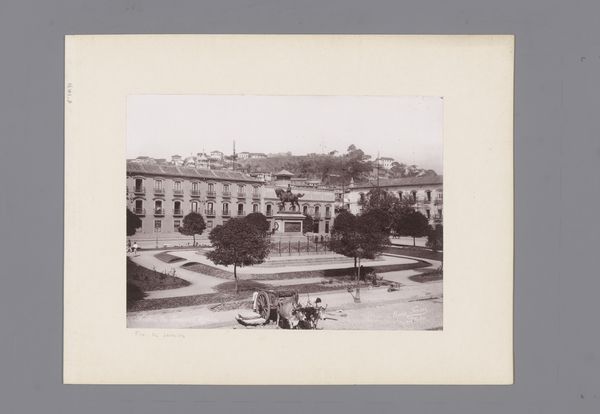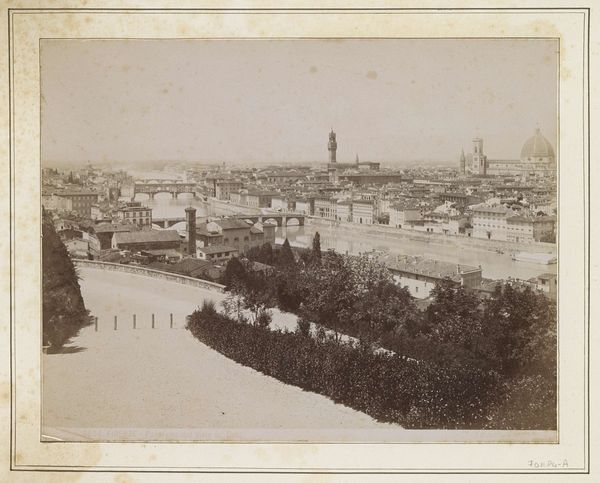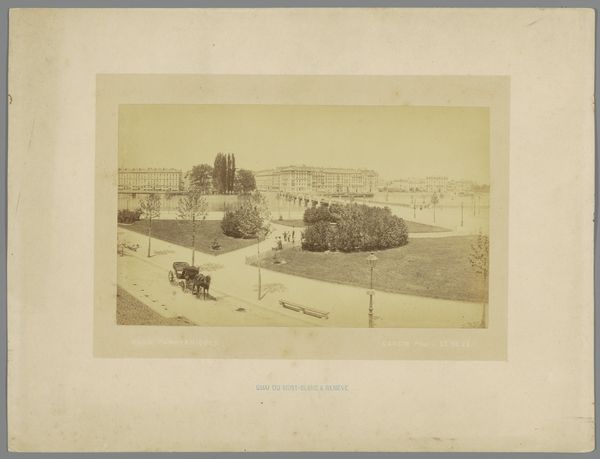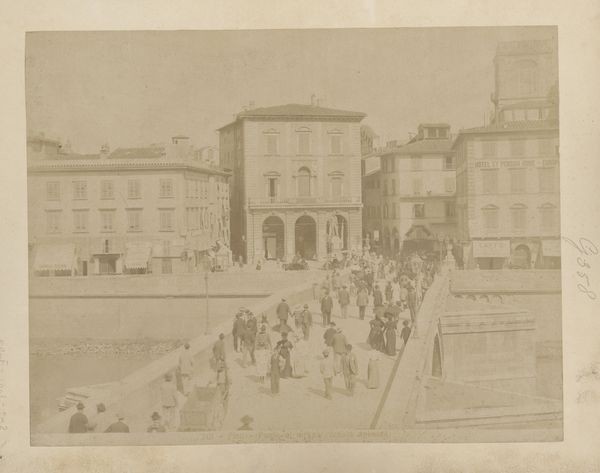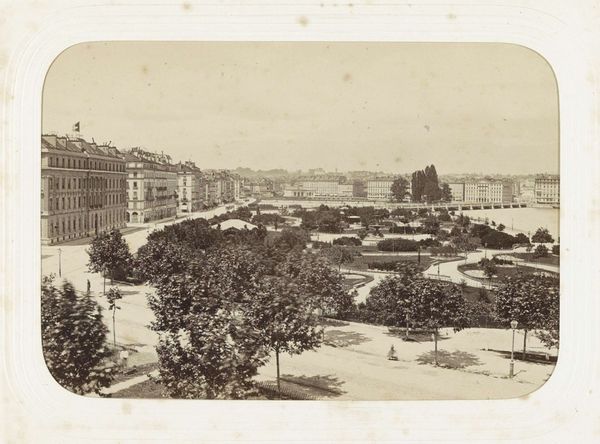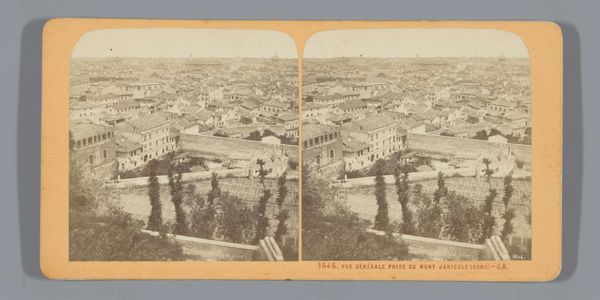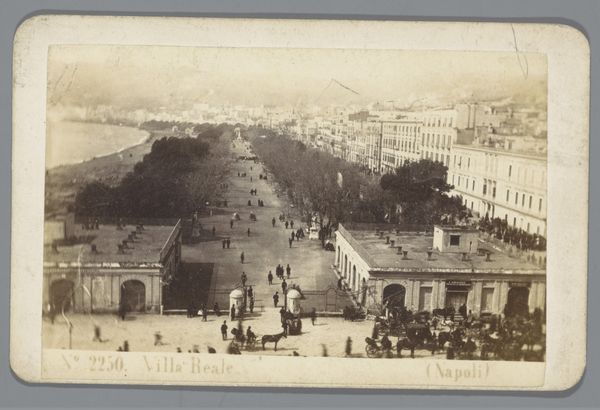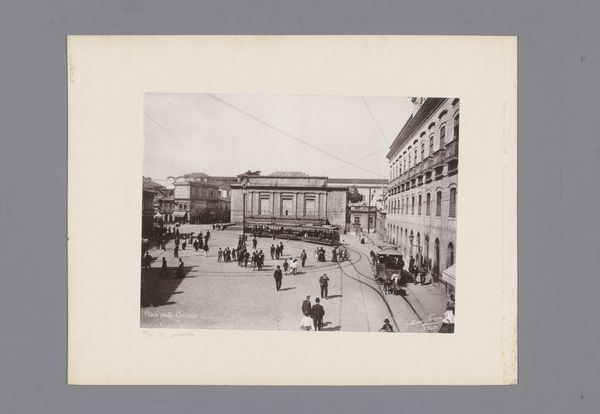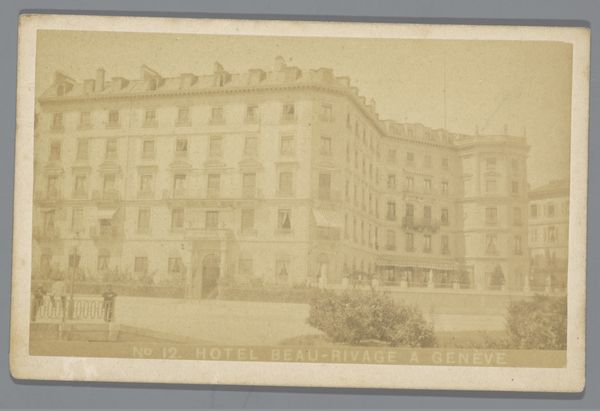
photography, albumen-print
#
photography
#
orientalism
#
cityscape
#
albumen-print
Dimensions: height 108 mm, width 161 mm
Copyright: Rijks Museum: Open Domain
Curator: Wilhelm Burger’s "Gezicht op Algiers", likely captured between 1863 and 1900, presents a fascinating cityscape rendered in the albumen print technique. Editor: There's a starkness to it; the way the light hits the buildings gives it a monumental, almost melancholy, feel. A rigid perspective emphasizes structure; notice the hard angles that define the composition. Curator: Absolutely. The visual weight of the architecture communicates imperial authority, perhaps, or a sense of the artist observing and trying to contain or define it within the edges of his frame. Orientalist photography, as it's categorized, served a particular representational function during this era, so such a reading could be useful here. The structures themselves - that series of arches and tiered buildings, have complex meaning for those of us in the West. Editor: True, we're viewing more than just architecture; we're looking at a codified iconography. Consider the Western gaze consuming, framing, and interpreting what it views as 'exotic'. It's visible in the tones: monochrome and antique looking even when new, creating distance between viewer and subject. There are subtle power dynamics visible here in how 'the Orient' is being perceived. Curator: Yet, the formal composition draws attention to balance. Note the linear recession and spatial organization; the buildings stacked on top of each other emphasize volume. This ordering and formal control gives it artistic integrity that exists quite independent of the context. Editor: It becomes a visual testament to a colonial desire—not just to capture an image but also an environment and to assign meaning within those physical spaces, almost as if the city's layout confirms European perception and order. It raises fascinating questions regarding the nature of capturing a space and placing oneself, as an observer, within its narrative. Curator: Indeed, contemplating these contextual elements against formal execution makes for richer viewing. It allows to move beyond appreciating it solely as photograph to deconstructing cultural biases embedded into it. Editor: Absolutely—leaving the viewer thinking about the deeper echoes of visual representations and the narratives that extend far beyond surface appearances.
Comments
No comments
Be the first to comment and join the conversation on the ultimate creative platform.

